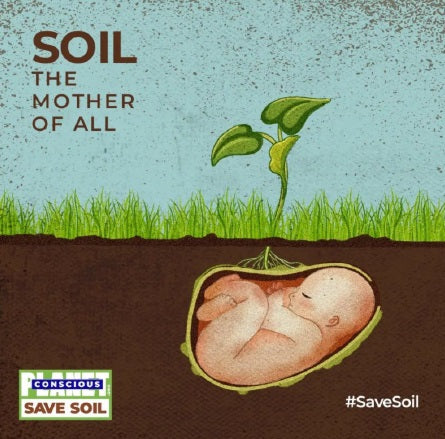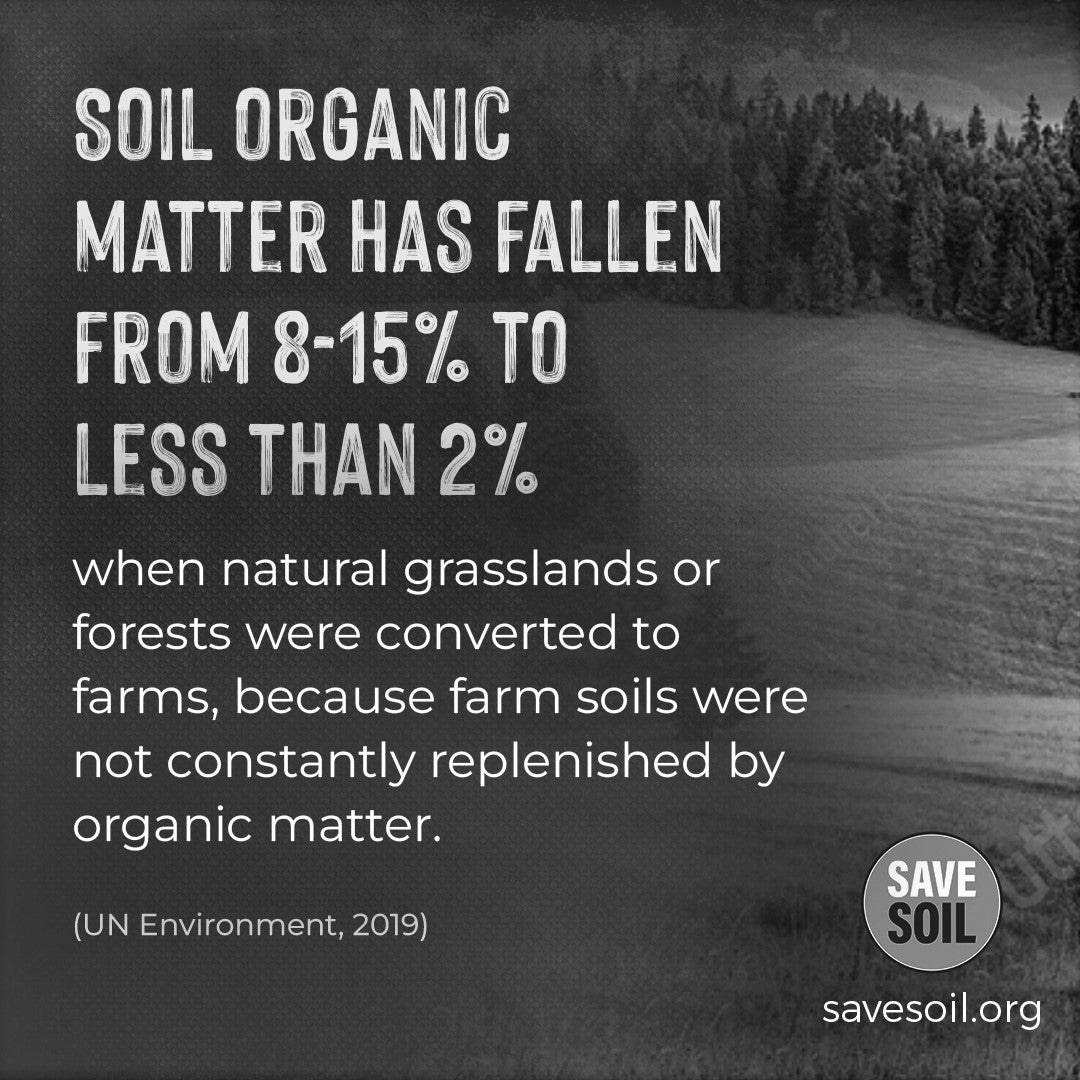'The Only Magic Material that Turns Death into life'
-Sadhguru
The nutrients we get from food essentially depend on the soils. Soils rich in nutrients and minerals are a precondition for a healthy diet since there is a direct link between soil quality and plant quality.
Since the early C20th there has been a 90% drop in the US in the nutrients in salad, and today we would have to eat 8 oranges to derive the same benefits our grandparents got from eating one.

Billions of micro-organisms live in the soil and perform the essential job of making nutrients in the soil available to plants.
Just like we don’t have the necessary enzymes and alkalines to digest food completely and need the help of the microbes which live in our gut, so it is for all plants: they cannot take the nutrients from the soil themselves and need the help of the billions of micro-organisms living there.
We need a healthy soil so that plants get a good balance of what they need, which in turn yields nutrient-rich food. A healthy soil means one rich in organic content (waste from vegetation or animals) or an absolute minimum of 3% organic content whereby there is enough diversity in the kinds of foods present in the soil for all the necessary sets of organisms to be able to perform their jobs for full plant benefit.

We Are Loosing One Acre Of Soil Every Second
When soil is ploughed and left open to the sun, or when chemicals are applied, we are killing all the microbial activity.
‘In most of the western world we are on the edge of not being able to come back from all the different sets of (micro-organism) species we’ve destroyed.'
-Dr Elaine Ingham, microbiologist, president Soil Food Web.
The soils of Southern Europe have an organic content of 1% or below, in Northern Europe they are 1.48%; in the US over 50% of the top soil has gone, and on the African continent the UN predicts that 7 years from now, by 2030, two-thirds of the arable land will have been lost if the march of desertification is not stopped.
Save Soil is a global movement launched by Sadhguru which aims to increase the organic matter in cultivable soil to a minimum of 3-6%.
To effect this change the movement is working to raise awareness among 3.5bn people to garner their support and advocate for national policies and actions across all nations towards soil restoration.
Without laws and policies effected, we may be enthusiastic for restoring our soils today, but tomorrow we cannot guarantee our actions. To have a law enshrined in a democracy means people have to speak up to their leaders that this is significant for their vote.
Carbon Sink
Soil is the second largest carbon sink after the oceans. Carbon stored in soil is 3x that stored in living plants and 2x that in the atmosphere, which means healthy soil is crucial for carbon sequestration. But the Amazon basin is no longer a carbon sink - it has become a carbon source, releasing more carbon than it is taking up.
Water Storage
Water stored in soil represents about 65% of fresh water. Depleted soils due to declining organic content cannot absorb, hold and regulate water flows. Lack of water retention leads to water scarcity, droughts & floods.
There’s a strong connection between soil degradation and climate change. A lot of carbon that was stored in soil is now in the atmosphere; nearly 40% of this is happening because soil is left open.
The main contributor is agriculture: the same soil that would have taken carbon dioxide and methane from the atmosphere is releasing it because we are leaving soil bare and there is no life or microbial activity. If we can take carbon dioxide from the atmosphere through plants and put it back in the soil and keep it there, then we deplete the carbon from the atmosphere and global warming is less of a problem.
Proposed measures by the Save Soil movement to restore soil are in three phases:
Agricultural land owners across the world, by law, should move towards a minimum of 3-6% organic content in the soil in the next 8-12 years. Initially by recommendation (phase I), then by incentive (phase II), then by mandatory law (phase III).
PHASE II THREE-PRONGED STRATEGY
Incentives
Provide attractive incentives to farmers to achieve 3-6% organic content through soil friendly farming practices and sustainable agriculture
Carbon Credits
Facilitate decent carbon credit incentives direct to farmers through business and industry
Food Labelling
Develop food labelling for food grown from soil that has a minimum of 3-6% organic content.

